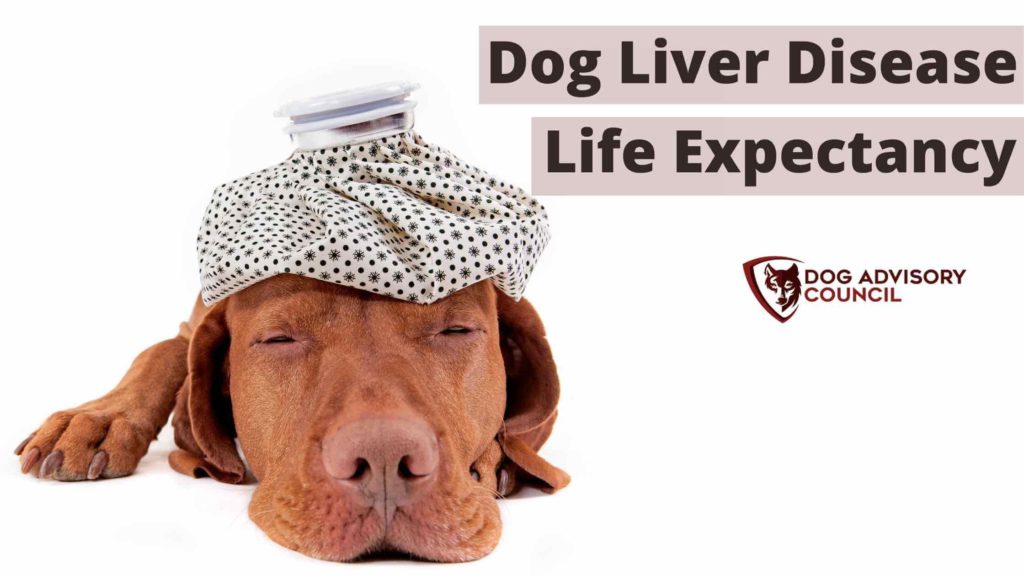
If your vet’s just told you that your dog has liver disease, you’ve got a few critical questions that you need to be answered — namely, life expectancy. Here’s what you should know about your dog’s future.
The life expectancy will depend on what stage of liver disease your dog has. As you can imagine, the more serious the cirrhosis of the liver, the shorter the lifespan.
In cases with dogs that have chronic hepatitis, you can expect them to live between 21-34 months (2-3 years). However, in cases where it is especially severe and has progressed to cirrhosis, you could be looking at as short as a week.
A vet can often give you a more specific window.
Types of liver problems in dogs
There are a few types of liver problems that can occur in dogs. Understanding which one your dog has will give you different life expectancies. The main ones to think about include:
- Liver failure
- Liver cancer
- Hepatitis
- Cirrhosis
Unlimited claims, No credit checks, No upper age limit & Multiple pet discounts
Compare the best rates on pet insurance
Liver failure
This is when the liver suddenly stops functioning as it should. Be it from an infection or for unknown reasons, the liver will lose approximately 70% of its ability to filter out toxins from your dog’s body. This has four stages, as discussed later, and detecting it early is going to help your dog’s life expectancy and prognosis be as positive as possible!
Liver cancer
This cancer involves tumors growing in and on it, as you can imagine. Some dogs are prone to liver cancer. This will impact the function of the liver and must be treated with chemotherapy or surgery to help keep the liver functioning as needed.
Hepatitis
In dogs, this mainly occurs when the metabolism in the liver changes, and it’s now drawing in a lot of fat content. Instead of flushing it out as it should, it collects it. This is technically a form of liver disease. It’s most commonly referred to as “fatty liver disease.”
Cirrhosis
This is technically the end stage of liver disease, but it’s essential to discuss it separately. In the three types of liver problems above, treatments can help the dog’s liver keep its function and even help your dog recover. When it gets to the point where it progresses to cirrhosis, however, this means that there is scar tissue that has formed in the liver, and it isn’t reversible. At this point, the liver will continue to fail and degrade even with treatment and support.
What causes liver disease in dogs?
There is no known cause of liver disease in dogs. Most experts agree that age is the main factor influencing liver disease setting in or not. Some experts think dogs who eat a lot of human food will end up with a form of liver disease. Some dog breeds are thought to be predisposed to it, though there is still a lot of research needed on this!
This is part of why proper vet checks are important with your dog. Vets can check their levels with simple bloodwork and spot a problem very early. This early intervention will help your vet offer targeted treatment to your dog while still in the first stage.
What are the stages of liver failure in dogs?
There are four stages to liver failure in dogs. The lower the number, the more likely it is that a vet can help your dog recover from it, or at least slow its progression to give you and your dog more time to enjoy life together.
Acute liver failure: Stage 1
At this stage, a vet can intervene with medications and careful diagnostic testing to figure out what is causing the liver failure and disease. Discovered and treated aggressively, healthy dogs can recover their liver’s health and go on to enjoy more-or-less everyday lives! The key to this is early detection, however.
Chronic liver disease: Stage 2
At this point, a dog’s liver would be in a chronic state. Their liver would be inflamed, and it would be “setting in” as far as a lifelong condition. It is still manageable with medication and treatments, of course. Still, medication and treatment can’t reverse it as it would be in Stage 1 mentioned above. This is where most dogs end up being diagnosed. Dogs can live for years afterward, but it will shorten their lifespan nonetheless.
Cirrhosis: Stage 3 and 4
As you can see, there are two stages in this particular kind of liver failure. At this point, the scarring has set in, and the liver will no longer be able to recover as it could. This is the beginning of “the point of no return” for your dog. The timing between Stage 3 and Stage 4 depends mainly on your dog’s existing health and other factors. It will be about making your dog’s quality of life as positive as possible from this point on.

Is liver disease painful for dogs?
This is a challenging question. It can be painful for dogs because their organ is, essentially, shutting down, and that causes the rest of their body to follow suit. Most vets will prescribe pain medication for just this purpose. You’ll want to get used to looking for signs of pain in your dogs, such as lethargy, whining, and obvious discomfort. If you notice these, you’re going to want to consider pain medication to help ease their discomfort. However, it’s going to be each person’s individual decision.
What is the life expectancy of end-stage liver disease?
If your dog has end-stage liver disease, such as cirrhosis mentioned above, then you can expect to be looking at having them pass away in months. In severe stages, it could be as short as weeks.
What are the symptoms of a dog dying from liver failure?
It’s always challenging to face the fact that your dog might be dying from liver failure. Since most pet parents discover the diagnosis only to face losing their dog immediately, it can be a heartbreaking situation. Part of being a pet parent is knowing when that moment has come, though. Signs to watch for include:
- Refusal to eat/lack of appetite
- Increased thirst
- Weight loss
- Unsteady walking
- Confusion
- Moderate jaundice (yellowing of the eyes, ears, etc.)
If you notice these symptoms in your dog. In that case, you’ll want to talk to your vet about euthanasia or at least some powerful pain pills to help your dog enjoy more comfort in their final weeks or months. The decision to put down your dog is always hard to make, but it’s an important one for their comfort.
When to euthanize a dog with liver failure
Perps the most challenging question when you’ve found out that your dog has end-stage liver failure (Stage 4). You’ll want to work hand in hand with your vet to get a feel for what you should be looking for with your dog’s quality of life and general comfort.
Generally, when their pain is no longer manageable with pain medications and they are still experiencing a lot of pain indicators, it might be time to make that call. Again, your vet will be able to help you with that. There’s no reason why you have to make that decision yourself, after all.
The other indicator is your dog’s overall quality of life. If they can no longer move, eat, drink, or generally be part of daily life, it might be time to make this difficult decision. After all, you don’t want your dog to suffer, right?
What to feed a dog with liver problems
If you want to help your dog’s liver as healthy as possible when you know that he has a poor liver, there are some great suggestions on food and supplements.
When it comes to supplements, most vets will recommend going with ones that focus on antioxidants, Vitamin E, and more. These will help support your liver’s health and function, which will help take off the strain, too. These should be added carefully to your dog’s diet with a vet’s support to do it at the right dosage. Don’t add supplements without first talking to your dog’s vet!
The other thing that you can do is give them calorie-rich dog food. Even better, a type of food designed for hepatic needs (aka liver). This will provide them with extra calories to keep their body strong and moving and will boost their liver’s health and function, too. This can help them keep their quality of life much better for longer, too.
Lastly, focus on a low-protein, low-sodium diet that will keep their liver from getting further stressed out. If you can give your dog lean sources of protein, which are easier for them to put to work, this is preferred, too.
My dog with liver disease won’t eat: What should I do?
It can be frustrating when our dogs refuse to eat. If your dog isn’t eating, then look at mixing his food with something that he does like. Perhaps a vet-approved dog-friendly gravy or switching to soft food. The goal is to keep him eating for as long as possible.
The other painful thing to think about is that your dog may be refusing to eat because he is simply feeling too poorly to do so. This is often the indicator that your dog is no longer holding a good quality of life, and it might be time to accept that he’s reached the end of the road. Your vet will be able to help with this, of course, as far as understanding what the refusal to eat means.
In summary
Learning your dog has liver disease and that you don’t have much time together is going to be jarring and heartbreaking.
Understanding how to recognize its different stages and how to deal with them will be integral for making the most out of that time for everyone’s comfort.
There are four stages of liver disease, and life expectancy will depend on where your dog is in those stages. Stages 1 and 2 can give your dog 2-3 years. However, Stages 3-4 can be anywhere from months to even inside a week after diagnosis.
The first two stages focus on the detection of the problem and treatment. The last two stages focus on helping your dog enjoy his quality of life as much as possible.
Unlimited claims, No credit checks, No upper age limit & Multiple pet discounts
